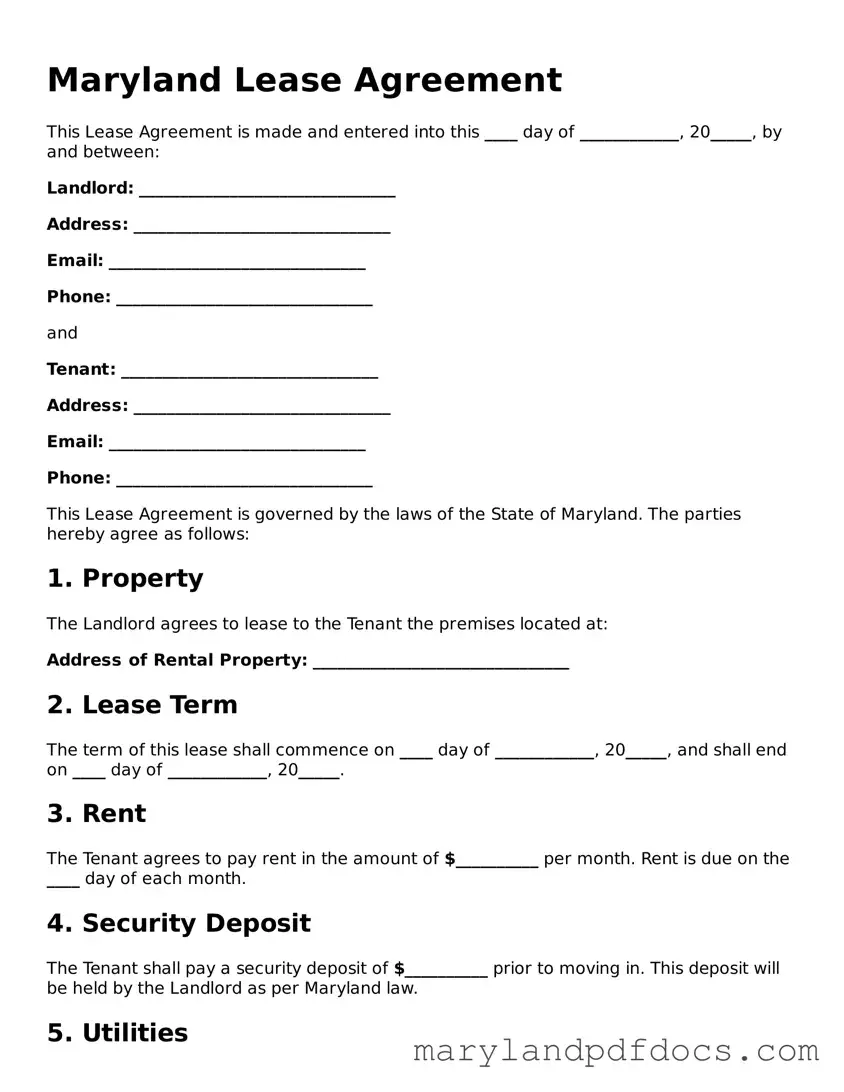Maryland Lease Agreement
This Lease Agreement is made and entered into this ____ day of ____________, 20_____, by and between:
Landlord: _______________________________
Address: _______________________________
Email: _______________________________
Phone: _______________________________
and
Tenant: _______________________________
Address: _______________________________
Email: _______________________________
Phone: _______________________________
This Lease Agreement is governed by the laws of the State of Maryland. The parties hereby agree as follows:
1. Property
The Landlord agrees to lease to the Tenant the premises located at:
Address of Rental Property: _______________________________
2. Lease Term
The term of this lease shall commence on ____ day of ____________, 20_____, and shall end on ____ day of ____________, 20_____.
3. Rent
The Tenant agrees to pay rent in the amount of $__________ per month. Rent is due on the ____ day of each month.
4. Security Deposit
The Tenant shall pay a security deposit of $__________ prior to moving in. This deposit will be held by the Landlord as per Maryland law.
5. Utilities
The Tenant is responsible for the payment of all utilities, including:
- Electricity
- Water
- Gas
- Internet/Cable
6. Maintenance and Repairs
The Landlord is responsible for the maintenance and repair of the premises, with the following exceptions:
- Damage caused by the Tenant.
- Negligence by the Tenant in reporting maintenance issues.
7. Termination
Either party may terminate this lease by providing written notice at least 30 days prior to termination.
8. Governing Law
This agreement shall be governed by, and construed in accordance with, the applicable laws of the State of Maryland.
Signatures
In witness whereof, the parties hereto have executed this Lease Agreement as of the date first above written.
Landlord Signature: _______________________________ Date: ________________
Tenant Signature: _______________________________ Date: ________________
